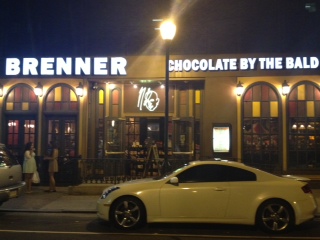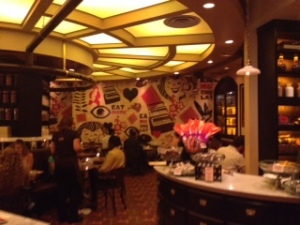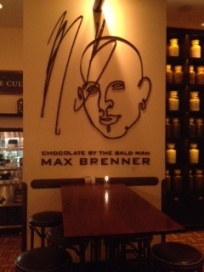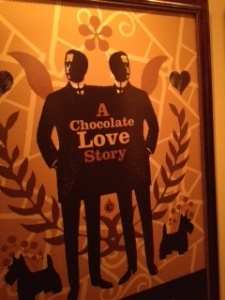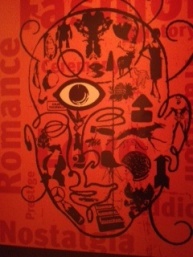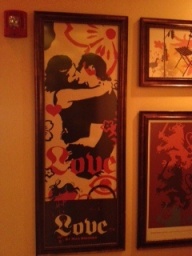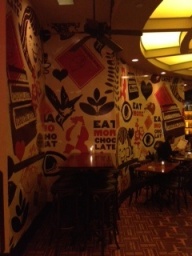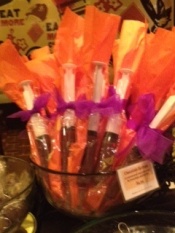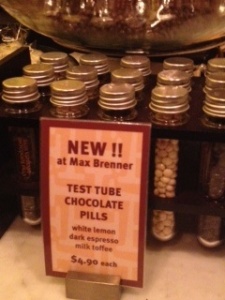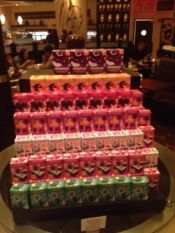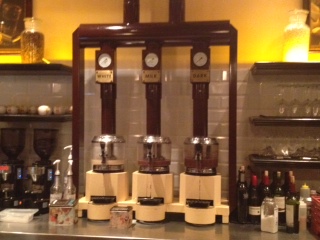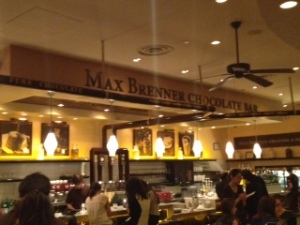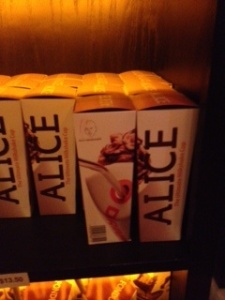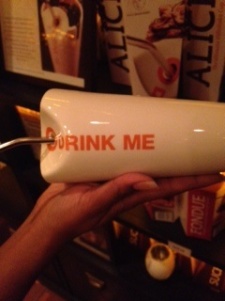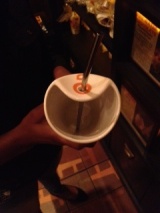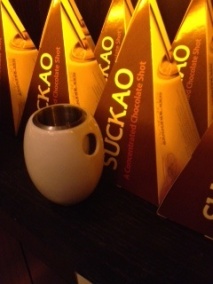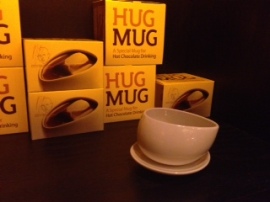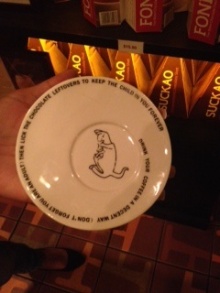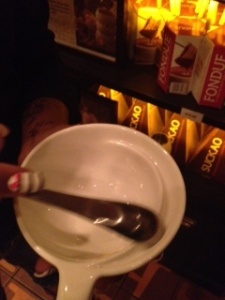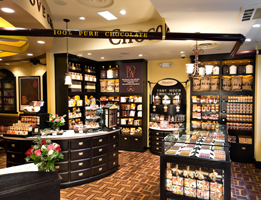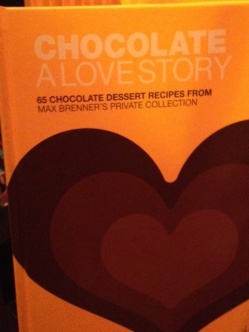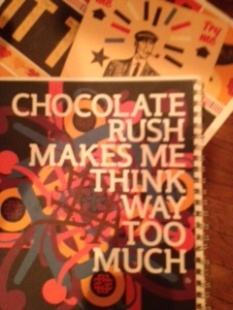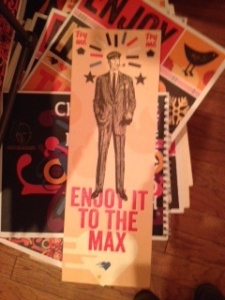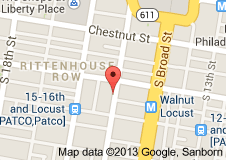by Peter Jaroff
Things in New York begin either six flights up or one flight down and then just vanish. All the wonders that Henry James wondered at a century ago – the Waldorf-Astoria, the Metropolitan Opera – are gone, and the wonders that he didn’t wonder at but that we know enough to wonder at now – say, Albert Ryder’s room in the Village – are

The Waldorf Hotel in 1893
gone, too. The past, even the immediate past, in New York is organized more or less like the cemetery in Venice: the skeletons are buried and then, after a dozen years, dugup and evicted and thrown onto a second island, in a mixed-up heap of remembrance. New Yorkers live on that second island, and sort through crazy heaps of memory to find a past. There are compensations for our indifference, though. Freed from its connection to its origins, the past has more carry. Nothing calls it home, and the picture or the poem or the piano part often just keeps on traveling, past the original audience and into the world, the way that, though the Polo Grounds are gone, Bobby Thomson’s home run is still traveling over that fence.
Exactly forty years ago this summer, on June 25, 1961, three young jazz musicians – the piano player Bill Evans, the bass player Scott LaFaro, and the drummer Paul Motian – went down to a New York basement, smoked, yawned, joked a bit, and got to work. The trio played thirteen songs, most of them slow: “My Romance,” “I Loves You, Porgy,” and even a waltz from the Walt Disney movie “Alice in Wonderland.” The music they made was recorded, and was released later that year by a small independent label called Riverside. The album’s title was “Sunday at the Village Vanguard.” Later in the year, another record from that afternoon was released, called “Waltz for Debby,” after one of the songs. Since then, the same two and a half hours has been repackaged and re-released and remastered and reconsidered, in albums called, among other things, “The Village Vanguard Sessions” and “At the Village Vanguard.”
It is easy to cite worshipful jazz-critic passages about them, concerning intonation and modal passages and singing tones, though none of the writing itself has the least emotional force. It is difficult to explain the force the music does have, since it is not particularly forceful. People who don’t respond to it are puzzled that anyone hears anything in it at all. They say that it sounds like “background music,” or like cocktail music. Philip Larkin, acerbic but sound, said that it had a Pierrot-in-the-moonlight quality, and how you feel about it, perhaps, depends on how you feel about Pierrot in moonlight. As the jazz critic Ira Gitler pointed out in the original liner notes, Evans was at the time an aficionado of Zen Buddhism, and the music he made was meditative and tuneful, between Suzuki and Snow White.
If you are vulnerable to this music, however, you are completely vulnerable to it. Bill Evans has no casual fans. After that afternoon, his name became synonymous with a heartbreak quality that is not like anything else in music. It is not little-boy-lost or blue, like Miles Davis, but transparent and wistful. Evans’s solos on “Alice in Wonderland” and “My Foolish Heart” and, especially, “Porgy” have a mother-of-pearl tone, singing and skipping, as though they were being played on the celesta or xylophone. They are as close to pure emotion, produced without impediments – not at all the same thing as an entire self poured out without inhibitions, the bebop dream – as exists in music. His music hints at the secret truth that New York is sad before it is busy, and that it is a kind of inverted garden, with all the flowers blooming down in the basements.
This particular basement, the Village Vanguard, still stands, or cowers, under Seventh Avenue. And three of the people who were there that particular afternoon – the producer, the drummer, and the club owner – were in town on the weekend of the fortieth anniversary. On June 24th and 25th of this year, it was possible to speak to them, and to get them to ruminate a bit on how the afternoon happened, why so many people now remember it, why earnest French and Japanese scholars and collectors brood and argue over and analyze it, and what it all has to do with the still potent romantic formula of city lights, early death, and the piano.
The facts of Bill Evans’s life, and of the events leading to that afternoon, are easy to find. Bill Evans was born in 1929 in New Jersey, into a Russian Orthodox family. He studied music at Southeastern Louisiana College, of all places, and graduated playing flute and piano and violin – a prodigy. He was one of the first jazz musicians who knew Schubert and Nat King Cole equally well, and he thought that he could get more of the spirit of Schubert by playing like Nat Cole than by playing like Arthur Rubenstein. He came to New York in 1955, scuffled around, and then was taken up by Miles Davis. In 1958, Evans joined Davis’s group for eight months – the only white musician in the sextet – and then played piano on Davis’s “Kind of Blue,” for which, by most accounts, he collaborated on many of the basic tunes. Davis gave him noise – a sudden credibility in the suspicious jazz world – but he gave Davis quiet. He sounded “like crystal notes or sparkling water,” Davis said.
Evans recorded a few albums with bass players and drummers around New York and then, in 1959, discovered the young bass player Scott LaFaro, who played the bass as if it were a guitar, freely and melodically, rather than dutifully and as a blue-collar obligation. Paul Motian, a poetic, brushes-and-silver-high-hat drummer, joined them, and what is usually called “the first trio” was born. They made a very good record together, “Portrait in Jazz” – all their album titles tried to hit a slightly Lane Coutell, suede-elbow-patches note then seen as “intellectual” – and, in 1960, they went on the road.
Orrin Keepnews produced both Vanguard records, and on June 25th forty years later he happened to be staying at the Algonquin (jazz impresarios of his vintage maintain a high regard for the Algonquin), and he settled down in the lobby to talk. In his late seventies, he lives now in San Francisco, where he still produces jazz recordings. He is a small, burly bear of a man, still wearing a fifties bongos-and-beatniks goatee. He is also a world-champion digresser, sending out long skeins of words, which bend back and dissolve into the previous ones.
“To understand that day you have to understand this about the time: jazz was a prevalent music, but it wasn’t a popular music,” he said. “People read about it and talked about it and it got written about, and you could hear the occasional hit – a ‘Take Five’ – on AM radio, but basically it didn’t sell. If a record sold a few thousand copies, we were quite pleased. On the Sunday, I was working dials and worrying about the power outages – we had one early – and the rest of the time I was worrying about Bill. What was striking about Bill from the beginning wasn’t the quality of his playing – there were a lot of good players – but the quality of his self-criticism. He was always genuinely ready to learn. The trouble with Bill – and, as much as anything, that was the cause for our deciding to record him live – was always persuading Bill to play at all. He had very low self-esteem. That’s what drew him to Scott. Scott was already a rumor even before he was a whisper – everyone had heard of this phenomenal bass player, and when they started working together what was clear from the first was that Bill had something very different in mind from the normal interplay of piano with bass. Most so-called trio records are just an accompanied piano player – the bass player’s function is to emancipate the pianist’s left hand. Bill was looking for something very different – a joined-together kind of thing.
“We chose Sunday because we knew that we had two shows, the afternoon matinee and the evening show, and we would have both. Live recording was pretty much in its infancy. Today, you’d have a van with a studio inside, but we just had portable Ampex equipment, which I think we lined up by the banquette. Bill was tough, of course. Even after we had made the first record with the trio, he didn’t believe that he had enough to express. He was brutally self-critical. I used to joke about forming a Demon Band of musicians who never thought they were good enough, never thought they had got it right. The Demon Band would have included Sonny Rollins on sax, J.J. Johnson on trombone, Wes Montgomery on guitar, and Bill on piano. It seemed to have an inordinate number of my musicians. Finally, I realized that the Demon Band could never really exist, because we could never find a drummer. No drummer suffers from self-doubt.”
Paul Motian is a drummer. Though he is seventy, he looks twenty-five years younger, kept limber, it seems, by the constant doses of the hipster skepticism proper to a jazz musician of his generation. He still plays regularly and will have a date at the Vanguard this month, and is looking for a publisher for his autobiography, “We Couldn’t Find Philadelphia.” He has kept his “gig books,” recording where he played and how much he got, for the last forty-five years.
“We were great,” he said that weekend, at a Hungarian strudel-and-coffee spot on Amsterdam Avenue. “But look at this – I got one hundred and thirty-six dollars for the famous legendary record, one hundred and ten for the gig, and one hundred and seven for the second record.”
“Look at the gig book: here we are at the D.C. Showplace. That’s where Bill said, first night, second night, ‘Ladies and gentlemen – I don’t feel like playing tonight. Can you understand that?’ And they kind of did. Bill was sincere, and he had a great sense of humor. He was good, but I was good with him, you know, because I listened. We listened to each other, and you can still hear us listening when we play. Scott was tough on Bill. He was the one man who could be tough on Bill. Like if he didn’t think the music sounded right – if it was great but not perfect – he’d say to Bill, ‘Man, you’re just fucking up the music. Go look at yourself in the mirror!’ He’d even say it to me, when he didn’t think I was playing right. And he had only been playing the bass for a few years.
“O.K., here’s May, two weeks in Detroit, then in Toronto, and then here comes June, and there we are, booked at the Vanguard. Then I remember we were in Philadelphia and somebody said to us, ‘Hey, you know, they’re imitating the way you guys sounded in Detroit!’ Imitating the way we sounded in Detroit! I knew then something was happening. Imagine people imitating the way you sounded in Detroit!”
Paul Motian and Orrin Keepnews had a clear memory of the afternoon, but what they remembered was work, not art: dials that rose and fell, and money counted out in three figures. Lorraine Gordon is the widow of Max Gordon, who invented the Vanguard. She helped run it then and still takes reservations for the club, and on the anniversary Sunday she was where she ought to be, and that was on the phone. “Vanguard. Yes, reservations are recommended. What if you have to cancel? You have to cancel.” She hung up. “We’re blessed, you know, because a Japanese tourist service makes regular visits. They love the idea of the Vanguard and, of course, they love jazz.
“In 1961, everything was changing, because of television,” she said. “When Max opened the Vanguard, it was a place for poets. It was a speakeasy, a theater after that, but it always had the same wedge shape. It was only in the late fifties that it became a jazz club. Sundays for us was a time when we had a relaxed crowd. And Max had a Steinway, which was replaced by a Yamaha, which Bill loved. Of course, I remember, was it that gig or the next, when Bill’s left arm was paralyzed and he played anyway, balling a fist and bringing his hand banging down from the force of gravity.”
Lorraine Gordon did not have to explain this image. Evans was, for most of his life, a drug addict. Lorraine Gordon saw him banging the left side of the keyboard with a paralyzed hand because he had been shooting up heroin and hit a nerve. “He’d been a junkie for a couple of years by then, and I had to slip him a few dollars,” Keepnews said later. “I’m his friend, I’m his record company, I’m his producer. People say to me, ‘Why couldn’t you refuse him?’ Look, he was going to find the money, junkies do, and I wasn’t worried about him mugging someone in an alley. I was worried about him owing money to someone who would break his fingers if he didn’t pay it back. So I advanced him money, and I refuse to think that I was doing anything wrong.”
Paul Motian says, “‘I think I could play better’ – that was what you always heard him saying, whatever he was thinking of trying, a hypnotist, a psychotherapist. Maybe he took drugs because he thought it made his music better.” It is equally sadly possible that the dreamy, otherworldly quality of Evans’s playing that day had something to do with what was flowing in his veins.
On that Sunday afternoon in New York in 1961, the trio played five sets, about two and a half hours’ worth of music. The numbers ran between five and ten minutes a turn. In the first three sets, knowing that the machines were running, they didn’t repeat numbers, playing a lilting “Waltz for Debby,” a hushed “My Foolish Heart,” a floating ‘Alice in Wonderland,” and an up-tempo “My Romance.” Then, for the first time that day, Evans played “I Loves You, Porgy.” In the last set, they ran back over numbers from the first few sets. By then, it was late, a long day’s hard work, and they finished with a number by LaFaro, a strange 9/8 Zen thing called “Jade Visions.” Throughout the recordings, you hear the crowd noise: glasses tinkle and conversation goes on, a counterpoint of forty-year-old flirtation and talk. Orrin Keepnews said, “I remember listening to the tapes and saying, ‘There’s nothing bad here!’ Normally, you can cut one or two things right away, and there was nothing bad.”
Two weeks later, on July 6, 1961, Scott LaFaro was driving up Route 20, a back road in those days, to his parents’ place in Geneva, upstate. The car skidded and hit a tree, and he was killed instantly. “I was sleeping and the phone rang, and it was Bill,” Paul Motian recalled. “He said, ‘Scott’s dead.’ And I said, ‘Yeah,’ and I went back to sleep. And the next morning I said to my wife, ‘Man, I had the weirdest dream last night. I dreamed that Bill called me and said that Scott had been killed!’ So I called Bill right away at that apartment over on West Eighty-something to tell him about the dream.”
After Scott LaFaro’s death, Bill Evans became numb with grief; it took him months to recover, and there are people who think that he never did recover. Paul Motian: “Bill was in a state of shock. Look at my gig book: nothing, nothing, nothing with Bill, until December. Bill was like a ghost.”
“All jazz records,” Orrin Keepnews said, “have two lives, one in their time and another twenty-two years later. What no one could have imagined was that the second life would be so large.”
Why has that afternoon lasted so long? “You know what I like best on that record?” Paul Motian asked. “The sounds of all those people, glasses and chatter – I mean, I know you’re supposed to be very offended and all, but I like it. They’re just there and all.” Perhaps that’s it, or part of it. Though we’re instructed to search for “timelessness” in art, it is life that is truly timeless, the same staggeringly similar run of needs and demands and addictions, again and again, which blend one year into the next and one day into another and February’s gig in Detroit into March’s in Toronto. It is art that puts a time in place. Art is the part of culture that depends most entirely on time, on knowing exactly when. The emotions it summons belong to the room they were made in, and the city outside the room when they were made. Not a timeless experience of a general emotion but a permanent experience of a particular moment – that is what we want from jazz records and Italian landscapes alike. The gift the record gives us is a reminder that the big sludgy river of time exists first as moments. It gives us back our afternoons.
One of the mysteries of Evans’s career is that, after that Sunday, he continued to play “Porgy” over and over again, almost obsessively – but almost always as a solo number. Paul Motian gave this some thought. “I don’t think there was any reason – no, wait, I remember something now. While we were listening to that number on the tape, Bill was a wreck, and he kept saying something like ‘Listen to Scott’s bass, it’s like an organ! It sounds so big, it’s not real, it’s like an organ, I’ll never hear that again.’ Could that, his always playing it without a bass afterwards have been a sort of tribute to Scott? I kind of doubt it, but then again maybe so.” When we hear Evans play “Porgy,” we are hearing what a good Zen man like Evans would have wanted us to hear, and that is the sound of one hand clapping after the other hand is gone.


























